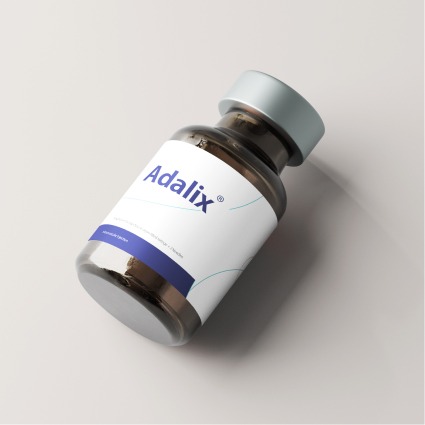What role do biopharma companies play in the MENA healthcare landscape?
Biopharma companies are not just players, but catalysts of transformation in the MENA healthcare landscape. They introduce advanced diagnostics and therapies, and upgrade systems that deliver care, ushering in a new era of healthcare.
Primary contributions
- Introduction of biologics and advanced therapies
- Strengthening clinical standards and care pathways
- Enabling local manufacturing and quality infrastructure
Beyond single products, biopharma’s presence often triggers system-level change: formulary modernization (updating the list of medicines covered by insurance), multidisciplinary tumor boards (teams of specialists to review complex cases), and evidence-based guidelines. As hospitals adopt new standards for biologics, pharmacovigilance, and companion diagnostics, the healthcare ecosystem shifts toward precision medicine and increased reliability in clinical practice.
How do biopharma activities affect patient outcomes and access?
Biopharma activities are not just expanding treatment options, especially for refractory disease, but also shortening time-to-therapy when local capacity exists. This is a reassuring sign for patients and a reason for optimism about the future of healthcare.
Key effects
- Improved survival and quality of life in defined indications
- Earlier access through local trials and approvals
- Reduced delays and costs from overseas referrals
When therapies are available in-country, delays from travel logistics, visa processing, and fragmented follow-up shrink, integrated pathways (diagnostics → eligibility → therapy → survivorship) increase care continuity, while national registries help clinicians refine indications and monitor long-term outcomes in local populations.
What are the economic impacts of a growing biopharma footprint?
Biopharma supports economic diversification by creating skilled jobs, attracting investment, and building adjacent industries, thereby reducing the region’s reliance on traditional sectors.
Economic channels
- High-skill employment (R&D, QA/QC, regulatory)
- Foreign direct investment and technology transfer
- Local supply chains (reagents, cold chain, testing services)
The sector stimulates upstream and downstream value creation—from academic core facilities to GMP suppliers and data services. Over time, these clusters can evolve into exportable capabilities (e.g., bioanalytics, clinical data management), reinforcing non-hydrocarbon growth strategies and national competitiveness.
How do biopharma firms build research and knowledge ecosystems?
By partnering with universities and hospitals, they enable clinical trials, translational research, and data generation specific to regional populations.
Knowledge levers
- Trial networks and investigator training
- Shared platforms (biobanks, registries)
- Methods transfer (assays, SOPs, validation)
Region-specific datasets matter: genetic backgrounds, disease phenotypes, and care pathways differ. Local evidence refines indications, informs health technology assessments (HTAs), and enhances the region’s visibility in international conferences and journals, thereby raising the bar for scholarly output and reproducible science.
What is the influence on workforce development and education?
The industry elevates skills through fellowships, on-the-job training, and competency frameworks aligned with global standards.
Capability areas
- Clinical subspecialties (hem-onc, immunotherapy)
- Bioprocessing and analytics under GMP
- Regulatory science, HTA, and pharmacovigilance
Sustainable progress depends on people. Structured curricula, simulation labs, and competency-based assessments formalize expertise, thereby enhancing it. Over time, professional pathways retain talent domestically, encourage reverse migration, and cultivate leadership cadres capable of managing complex therapeutic programs from start to finish.
How do biopharma activities shape regulatory capacity and quality standards?
They prompt modernization of regulatory, ethical, and quality systems to accommodate advanced therapies.
System upgrades
- Accelerated/conditional pathways with real-world evidence
- Good Clinical Practice (GCP) enforcement and inspection readiness
- Post-market safety systems and data governance
Advanced modalities require adaptive regulation: living medicines, companion diagnostics, and long-term follow-up. Joint workshops, mock audits, and harmonized dossiers raise the entire system’s maturity, reducing approval variance and shortening evidence-to-access timelines while preserving patient safety.
What risks and challenges accompany rapid growth in the biopharma industry?
Costs, inequity, dependency, and data ethics are persistent risks that require governance and policy foresight.
Key risks
- Affordability and budget impact
- Uneven access across regions or income levels
- Overreliance on external suppliers and IP
- Privacy, consent, and long-term safety oversight
If left unmanaged, advanced therapies can widen disparities or strain budgets. Balanced frameworks—such as price-volume agreements, outcomes-based contracts, and shared registries—can align incentives while protecting patients and public finances.
How does corporate social responsibility (CSR) change outcomes?
CSR operationalizes equity and sustainability, turning innovation into a public good rather than an elite privilege.
CSR priorities
- Access programs and tiered pricing
- Capacity building and technology transfer
- Transparent engagement and patient advocacy
Robust CSR embeds training, infrastructure grants, and community dialogue alongside product rollouts. This widens eligibility, strengthens local autonomy, and fosters trust—especially important for cell and gene therapies where societal acceptance hinges on ethics and comprehension.
What about environmental sustainability and supply-chain resilience?
Responsible biopharma programs address energy use, waste, and robust cold-chain logistics suited to regional climates.
Sustainability levers
- Energy-efficient labs and facilities
- Waste minimization and safe disposal
- Redundant, temperature-controlled supply chains
Environmental stewardship is integral to social license. Given high ambient temperatures and long transit corridors, resilient cold chains and real-time monitoring reduce spoilage. At the same time, green facility design lowers long-run costs and aligns with national sustainability targets.
How does regional collaboration amplify impact?
Cross-border cooperation pools scarce expertise, harmonizes standards, and supports shared centers of excellence.
Collaboration mechanisms
- Mutual recognition and aligned ethics review
- Regional registries and data sharing
- Joint training academies and reference labs
Small markets benefit from scale. Regional HTA dialogues, standard trial templates, and shared audit practices reduce duplication. Centers of excellence can specialize (e.g., cell processing, immunogenomics), serving multiple countries and accelerating learning curves for all participants.
How should impact be measured to guide policy and investment?
Use mixed metrics that capture outcomes, equity, capacity, and sustainability—not just units sold or trials launched.
Evaluation domains
- Clinical: survival, quality of life, time-to-treatment
- Equity: geographic and socioeconomic access indices
- Capacity: trained personnel, accredited facilities, and inspection pass rates
- Sustainability: budget impact, environmental KPIs, supply-chain uptime
Transparent dashboards and periodic reviews help ministries, payers, and academic partners course-correct. Embedding evaluation in funding agreements and CSR reporting creates accountability and evidence for scaling or redesigning programs.
For detailed insights into pharmaceutical advancements, visit Opal Bio Pharma.
Which policy levers maximize positive impact while managing risk?
Combine reimbursement innovation with regulatory agility and coordinated investment in infrastructure and human capital.
Policy toolkit
- Outcomes-based and managed-entry agreements
- Accelerated approvals with real-world evidence plans
- Grants/tax incentives for GMP and critical inputs
- National training pipelines and scholarship bonds
Coherent policy mixes prevent bottlenecks: there’s little value in approving advanced therapies without diagnostics, infusion capacity, or trained staff. Whole-of-system planning aligns financing, regulation, and education around realistic adoption curves.
What is the outlook for biopharma in the region over the next decade?
Expect deeper integration of precision medicine, digital health, and regional production—if governance and capacity keep pace.
Emerging trajectories
- Growth of cell/gene therapy programs and biosimilar manufacturing
- AI-enabled discovery and real-world data analytics
- Stronger regional hubs and exportable services (bioanalytics, PV)
The direction of travel is clear, but speed depends on execution: talent retention, interoperable data systems, and sustainable financing. Those that pair innovation with equity and CSR will convert science into durable health and economic dividends.
Bottom line: How should stakeholders think about biopharma’s impact in MENA?
Biopharma can be a force multiplier for health and knowledge economies—if embedded within equitable, ethical, and sustainable systems.
In summary
- Health: earlier access, better outcomes, stronger standards
- Economy: skilled jobs, diversification, investable clusters
- Society: trust, ethics, and environmental stewardship
The ultimate test is whether the sector enables resilient, learning health systems that serve the many, not the few. With thoughtful policy, rigorous evaluation, and sincere CSR, biopharma can help the region transition from importing breakthroughs to producing—and governing—them.

